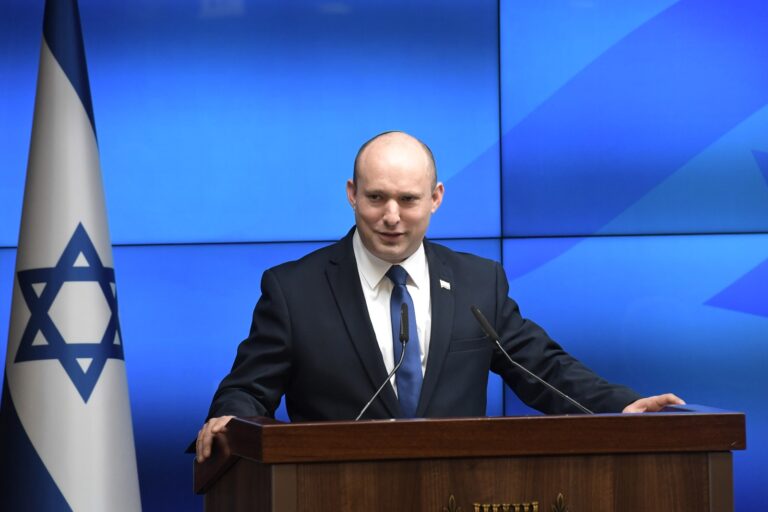 NATO’s chief said Tuesday the alliance is reinforcing its defenses against Russia from the Baltic to the Black Sea, but keeping all possible contacts with Moscow open to avoid any unwarranted escalation of tension.
NATO’s chief said Tuesday the alliance is reinforcing its defenses against Russia from the Baltic to the Black Sea, but keeping all possible contacts with Moscow open to avoid any unwarranted escalation of tension.
Jens Stoltenberg, the NATO secretary-general, confirmed previous statements that alliance defense ministers gathered in Brussels for a two-day meeting will back a deployment plan to send four multinational battalions to the Baltic states and Poland. He also said decisions are expected on forming a new multinational unit of ground forces in Romania.
“Defending our territory and protecting our people — that is NATO’s primary responsibility,” Stoltenberg said as he opened the ministers’ first working session Tuesday afternoon.
In a written statement, NATO deputy spokeswoman Carmen Romero said, “We will decide to establish a framework ‘brigade’ with a Romanian HQ and a Romanian and Bulgarian battalion — as a framework for training and exercises with other Allies’ units.” The brigade’s strength is expected to be roughly 3,000-5,000.
The U.S., Britain and Germany have already committed to spearheading the development of three of the four battalions that would go to Poland, Estonia, Latvia and Lithuania. A senior U.S. official said Canadian leaders are currently meeting to discuss the possibility that they would coordinate the development of the fourth battalion.
Canadian defense spokeswoman Ashley Lemire said that, “Unfortunately, we are not in a position to provide any additional details at this time. As a committed NATO ally, Canada is actively considering options to effectively contribute to NATO’s strengthened defense and deterrence posture.”
U.S. officials said it’s not yet clear whether the Pentagon will use troops currently in Europe to form the battalion or bring in others. U.S. Defense Secretary Ash Carter told reporters Monday that the U.S. may well contribute most or all of the 800-1,000 troops needed for that battalion.
British Defense Secretary Michael Fallon told reporters that in early 2017 Britain will deploy one of the “framework battalions” designed to beef up the defenses of the Baltic republics and Poland.
“That’s around 500 British personnel rotating on a continuous basis,” Fallon said. He said other countries will contribute to the multinational unit, including France, which will chip in a company.
Additionally, he said, Britain will send a company of between 150 and 200 troops, plus vehicles and equipment, to train and operate alongside Polish soldiers.
Fallon called the British moves “a very clear message that we are committed to defend the eastern flank. NATO is strong and united. …We are ready to respond to any threat.”
The new military plans, said one senior U.S. defense official, are key to putting some teeth behind talks with Russia, which have centered on concerns about Moscow’s military actions in Crimea and eastern Ukraine. NATO officials also predicted support for a Romanian proposal for a joint training initiative that focuses on specific operational requirements of the southeastern European region and promotes interoperability of NATO forces through training and exercises.
Additional proposals are also being considered to increase air and naval defenses in the Black Sea, where a Russian naval fleet based at Sevastopol in Crimea is a major player, NATO officials say.
Speaking to reporters before ministers met, Stoltenberg said that even as NATO reacts to what it sees as a potent security threat from a newly resurgent and unfriendly Moscow, “at the same time we convey a very strong message that we don’t seek a confrontation with Russia. We don’t want the new Cold War.”
He said it “is important that we continue to keep channels for political dialogue open, but also military contacts.”
Last month, NATO foreign ministers expressed broad support for convening a new meeting of the NATO-Russia Council, a forum that brings together ambassadors from NATO’s 28 member states and Russia. So far, there has been no public response from the Kremlin.
The defense ministers’ wide-ranging agenda is designed to set the stage for NATO’s summit taking place in roughly three weeks’ time, on July 8-9 in Warsaw. U.S. NATO Ambassador Douglas Lute on Monday called the meeting “the final tuneup” for the alliance before U.S. President Barack Obama and the other leaders meet in Poland.
On Tuesday and Wednesday, ministers are also expected to agree to cooperate more closely with the European Union in security affairs, discuss how to improve NATO cyberdefense, intelligence-sharing and decision-making to face current challenges, and meet with Ukraine’s defense minister.
Without disclosing details, Stoltenberg said “we will establish a framework to deal with threats and challenges from the south” — NATO speak for the Islamic extremist violence that has become widespread in the Middle East and North Africa.
U.S. Defense Secretary Ash Carter and his counterparts from Canada and NATO’s European members are also expected to consider providing AWACS surveillance planes to support the U.S.-led coalition fighting the Islamic State organization in Iraq and Syria, discuss how to support countries in the Middle East and North Africa threatened by extremist violence and assess what NATO can do to assist an EU operation attempting to stop people smuggling in the Mediterranean.
(AP)










